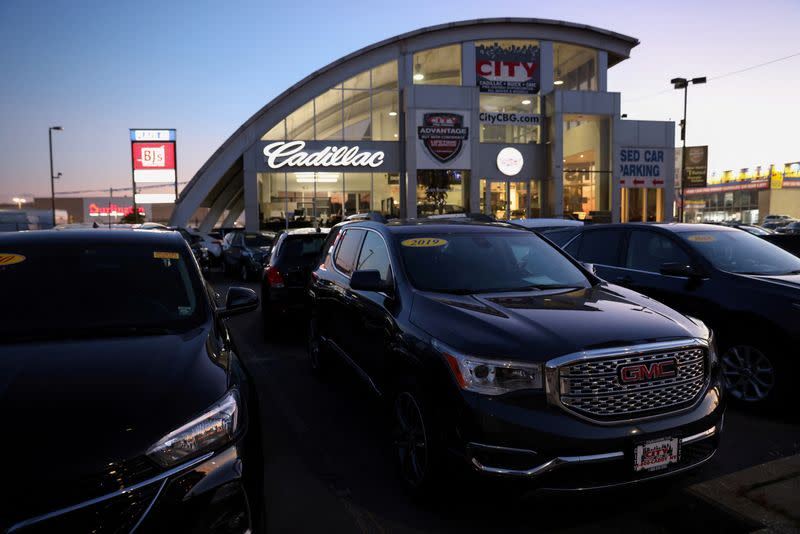Four ways for car buyers to survive the interest-rate crunch
By Chris Taylor
NEW YORK (Reuters) - The feeling of driving a new car off the lot is hard to beat. What comes next is not so nice: the first monthly payment.
That bill packs an extra punch these days. New car buyers with a monthly payment over $1,000 rose to an all-time high of 16.8% in February, auto information site Edmunds' data showed. That is up from 15.7% in last year's fourth quarter.
Rates are expected to head higher after the U.S. Federal Reserve lifted rates a quarter of a percentage point on Wednesday.
"It's unprecedented," said Ivan Drury, Edmunds' director of insights. "It's the acceleration that surprises the most: The combination of average transaction prices increasing greatly the last two years, and interest rate hikes. It's definitely hitting people hard."
While car prices have been leveling off as the supply chain normalizes, interest rates are squeezing buyers' wallets. Average interest rates on new-car financing rose to 7% in February, and an "ugly" 11.3% on used cars, Drury said.
A monthly car payment of more than $1,000 is starting to show its painful effects. The percentage of auto loans transitioning into delinquency (more than 30 days late) have been ticking up for the last three quarters, according to the Household Debt and Credit Report from the New York Fed.
Punishing interest rates are forcing car buyers to make tough decisions. Here are four survival tips.
BOOST THE DOWN PAYMENT
One obvious way to avoid high-interest-rate hell, if you have the means, is to put down more cash. That is exactly what buyers have been doing. The average down payment in last year's fourth quarter was the highest ever, at $6,780 for new cars and $3,921 for used, Edmunds data showed.
Without extra cash on hand, the temptation is to stretch financing out further and further to minimize the monthly hit.
"I recommend paying cash for a car, or being able to pay off the car in less than three years," advised Kassi Fetters, a financial planner in Anchorage, Alaska. "If you can't do this, then you're reaching for a car outside of what you can afford."
RE-EVALUATE YOUR PRE-ORDER
When the supply chain was clogged up and new cars were scarce during the pandemic, buyers put down deposits with a delivery timeline of many months. Since then interest rates have spiked, and used cars have become cheaper, so what made sense then may no longer apply.
"For them it can be a dangerous situation, because they are not in control anymore," Drury said.
If you can get out of such a pre-order without too much damage – or transfer that deposit over to a more modest purchase, as dealers may allow – it may be worth considering.
TRADE DOWN IF NECESSARY
It could be time to admit that your eyes were bigger than your wallet.
"If you're already tied up with a large car payment, then I suggest you sell it and get a car you can actually afford," Fetters said.
If you are swapping out for a more humble ride, look to basic offerings instead of splurging on fully loaded versions with high-end trim. Deals may be found in models that have not been fully redesigned for a few years, or certified pre-owned vehicles which sometimes come with subsidized interest rate offers.
A major roadblock is "negative equity," meaning you owe more on the car than you can sell it for. Since a car is a depreciating asset, and used-car prices have come off their highs, your trade-in may not help as much as you expected.
PAY MORE ATTENTION TO DEALER INCENTIVES
When interest rates are near rock-bottom, special offers like 1.9% or 2.9% financing may seem unexciting. Now, that can mean the difference between a comfortable or stressful monthly payment.
Such offers are unlikely on the newest cars, so you may have to refocus on last year's model.
"Find something where the interest rate is more manageable and subsidized," Drury suggested. "We are finally starting to see incentives rise a little more and be more widespread."
(Editing by Lauren Young and Richard Chang; Follow us @ReutersMoney)

 Yahoo Finance
Yahoo Finance 

